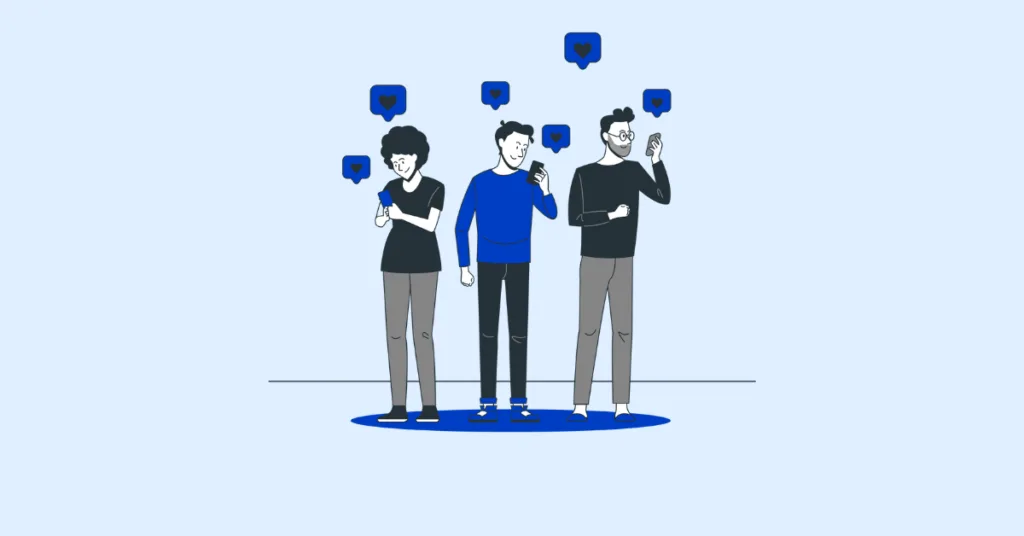[vc_row][vc_column][vc_column_text css=”.vc_custom_1623765621654{margin-bottom: 0px !important;}”]
When you think about the hero of your company, who is the first person that comes to mind?
Your initial thought might have been your company’s founder. After all, we probably wouldn’t be pondering this question if your company didn’t exist.
Well, it’s not them.
The next most logical guess is your company’s employees. It makes sense – they’re the ones who strap on their invisible capes day in and day out to keep your company running smoothly.
That said, they still aren’t the heroes we’re looking for. I hate to be the bearer of bad news, but it isn’t you either.
Like all great superhero movies, the answer to this question comes with a plot twist: The hero of your company is actually no one at your company. It’s your customers.
What is it about your customers that makes them heroic? It’s all about perception – and perhaps more importantly, it’s all about a journey.
 The Hero’s Journey
The Hero’s Journey
It’s intrinsically human to be self-centered, and that’s not necessarily a bad thing. Just about every choice we make relates back to how we can position ourselves to overcome a challenge. These challenges might not be as high stakes as Superman defeating the menace destroying the city, but it still serves as a primary motivator in most purchasing decisions.
The idea of the hero’s journey isn’t a new concept, but it wasn’t popularized in content marketing until author Joseph Campbell coined the term “monomyth” in 1949. Campbell argued that all heroic narratives follow the same cyclical formula, no matter how different the characters, themes and locations may be. The hero of the story goes on a life altering adventure, a decisive victory is earned, and they return home changed for the better.
Of course your customers’ adventure down your sales funnel might not be necessarily life altering, nor will it contain supernatural elements or intergalactic travel. Still, the fundamental cycle still works. In 2013, The Content Marketing Institute created a 10-step adaptation of the monomyth as it relates to your content marketing strategy:
1) The Conventional Market: This is the everyday world in which your brand exists. Other ‘characters’ in the conventional market include the overall landscape of your industry along with your direct competitors.
2) The Challenge: The challenge stage establishes the primary opposing force your customer is up against. What’s the problem? Who does it involve? How is it affecting them?
3) The Rejection of the Challenge: Think of this as the DIY stage. Your customer knows the challenge they are faced with, but aren’t quite convinced they need your company’s help yet to find a solution.
4) Appointment of the Sage: No one at your company is the hero of your story, but they can be the sage. Visualize this as the Yoda role, slowly easing your way into gaining your customer’s trust through your proven knowledge and experience.
5) Crossing Into the Unfamiliar: This is where your company must make a hard stance about an idea that may be new or different to your readers. What can you say to convince your audience to follow you into the unknown?
6) Map the Road of Challenges: Think of mapping the road of challenges like conducting a SWOT analysis prior to the launch of your marketing campaign. Identify your campaign’s anticipated strengths and weaknesses, along with any opportunities and threats that may hinder you on your path to victory.
7) The Final Challenge: This is the climax of your story. By this point in the hero’s journey, your company will have presented your reader with the solution they need to defeat their greatest challenge thus far.
8) Looking Back: Now that your hero has earned their decisive victory with the help of your company, it’s time to reflect back on the conventional market from step one. How has your company differentiated itself from your competitors now that you’ve guided your customer towards success?
9) The Final Renewal: All great stories set themselves up for the next chapter, and this is your opportunity to do just that. Now that your customer has presumably emerged changed for the betterm outline another SWOT analysis for the potential strengths, weaknesses, opportunities and threats they could face in their new state.
10) The Celebration: Create an opportunity for your customer to celebrate their win. Not only will this make them feel good about themselves, but they’ll also feel good about your company.
Writing Your Customers’ Journey
You probably won’t know the specifics behind your customers’ story right off the bat, or how they came across your business to begin with. Thankfully, details like who they are, which industry they’re in and what challenges they face aren’t necessarily must-knows before developing a narrative that places them in the hero role. Here are a few ways to utilize the monomyth formula to set your readers on their own heroic journey through your content marketing strategy:
Make “You” the Main Character
One of the biggest downfalls many companies fall victim to when crafting a hero-centered narrative has everything to do with you – and we do mean you. Those three letters can be the difference between a potential customer taking this journey with your company, or abandoning it before their story even started. Let’s take a look at the difference between centering your copy around your company versus on your reader:
- “Our customers deserve a marketing strategy that enables them to attract new leads and meet their goals and objectives.”
- “You deserve a marketing strategy that enables you to attract new leads and meet your goals and objectives.”
Which option would resonate with you more as a consumer – the sentence that focuses on someone else, or the one that speaks directly to you and your needs?
 Create an Origin Story
Create an Origin Story
One of the most common tropes in modern-day hero narratives is the origin story. Spiderman may be impressive on his own, but it isn’t until you get to know Peter Parker that you begin to connect with the human behind the suit. Creating a hero’s narrative through your content marketing strategy works the same way. You can spend paragraphs talking about your company’s success stories, but that human element needs to be present for a deeper connection to form.
A great way to humanize your brand is by showcasing the origin stories of your company’s previous heroes – your past customers. Write case studies highlighting some of your most successful clientele, explaining the challenges they were up against prior to working with your company and how they came out triumphant. Another option for adding a human element to your content marketing strategy is to ask your happiest former clients to share their own success stories through reviews and testimonials. Seeing real people in similar positions share positive experiences with your company will make your potential customers feel more confident about taking a similar journey with your team.
Establish Your Villain
Luke Skywalker versus Darth Vader. Batman versus Joker. Harry Potter versus Voldemort. Our greatest heroes wouldn’t have much of a story to tell without being pitted against a formidable adversary, would they? Before a potential customer can decide to take that hero’s journey with your team, you must first establish exactly what it is they’re up against.
Let’s use our company as an example. A large percentage of our leads come from business owners who are interested in redesigning their website. They already know their website looks dated and unappealing – it’s up to us to unmask other hidden threats they could be facing, such weak security and poor SEO. Once your villains are established, your potential customer will be able to visualize the journey they will need to take with the help of your team to come out on top.
Use Strong Visuals
The language you use in your digital marketing strategy is critical to centering your customer in the hero role, but that doesn’t mean your graphics should be an afterthought. If you were in the market for a new house, which website banner would speak to you more – one with a photo of a team of realtors, or one of a smiling family enjoying their forever home?
It’s human nature to subconsciously approach every new situation by asking yourself “How does this relate to me?” You probably can’t relate to being a realtor, but you can relate to the feeling of spending quality time at home with your loved ones. Choosing your imagery strategically in a way that evokes a sense of commonality can make your customer’s journey into the unknown feel a little more familiar than they might have thought initially.
The most successful businesses aren’t the ones who try to frame themselves as a savior, but rather as a solution. As subtle as it may be, there’s a big difference between “Here’s how we can solve your problem” and “Here’s how you can solve our problem with our help.” At the end of the day, your customer will always be the hero of their own story – it’s up to you to convince them to write your business into the next chapter.
[/vc_column_text][/vc_column][/vc_row]













